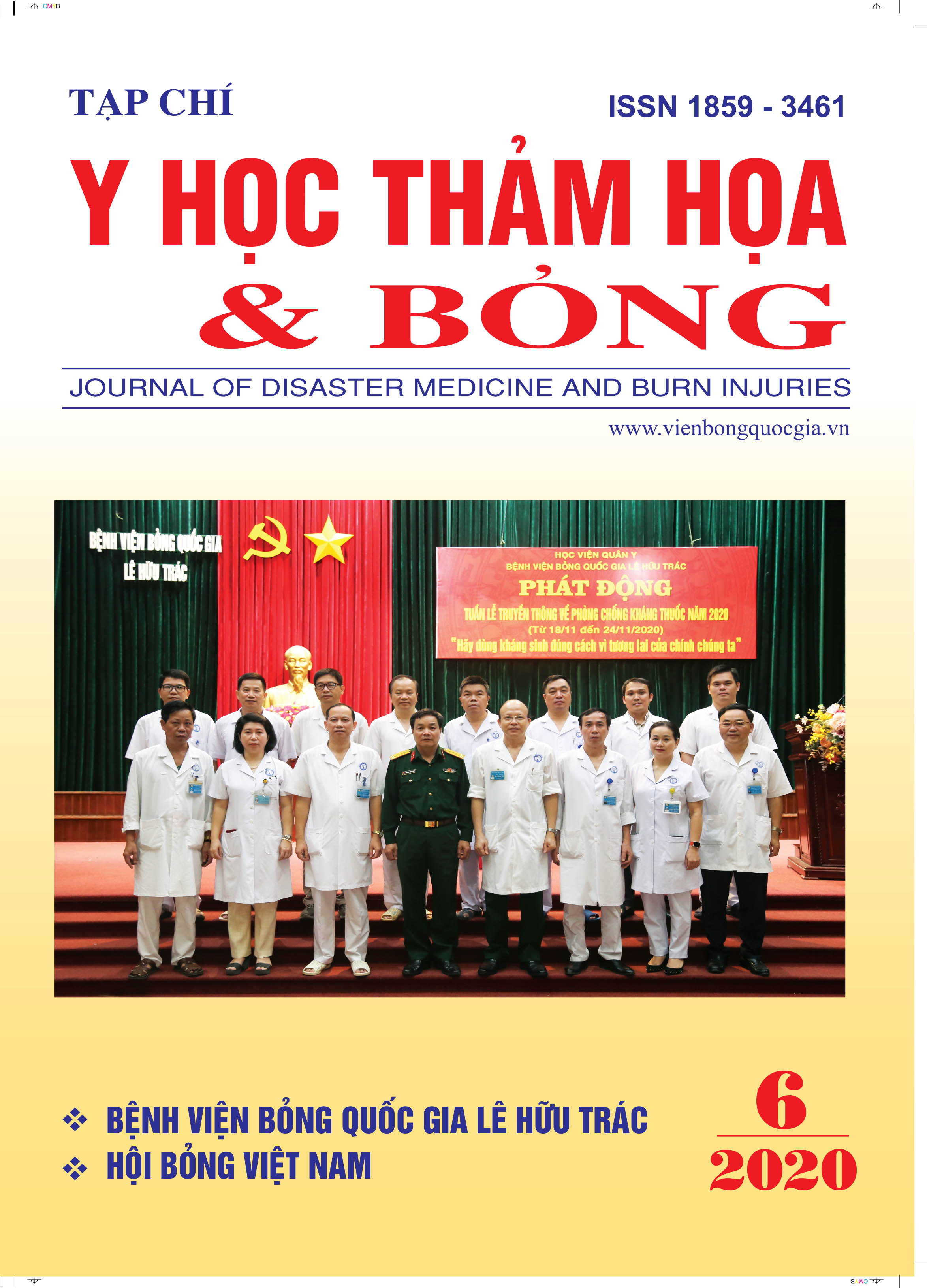Changes and impact of serum HDL cholesterol in adult patients with severe burns
Nội dung chính của bài viết
Tóm tắt
A prospective study was conducted on 58 adult patients with severe burns admitted to an Intensive care unit (ICU), National Burns Hospital. The results showed that over time after burns, total cholesterol levels were within the physiological limits. Meanwhile, HDL cholesterol levels significantly decreased from the 7th day after burns reached to the lowest level of 0.58mmol/l on the 14th day (p < 0.01), then recovered but was still below the normal range on the 21st-day afterburn (0.88mmol/l).
The proportion of patients with decreased HDL cholesterol levels gradually increased and peaked on the 14th day afterburn (96.36%). HDL cholesterol levels decreased remarkably in the group of inhalation injury and the older patients on the 14th day after burns (p < 0.05) and was not affected by burn severity and gender. Statistically significantly lower HDL cholesterol levels were recorded at almost every time of testing amongst non-survivors (p < 0.05).
HDL cholesterol level decreased per unit (mmol) resulted in increased mortality of 3.11, to 6.29 units. However, this reverse correlation was a week to moderate. Further studies need to be conducted to investigate the prognosis role and intervention for decreased HDL cholesterol amongst severe burn patients.
Chi tiết bài viết
Từ khóa
Severe burn, serum cholesterol, HDL
Tài liệu tham khảo
2. Coombes E. J., Shakespeare P. G., Batstone G. F. (1980) Lipoprotein changes after burn injury in man. The Journal of trauma, 20 (11), 971-975.
3. Dunham C. M., Frankenfield D., Belzberg H., et al. (1994) Inflammatory markers: superior predictors of adverse outcome in blunt trauma patients? Critical care medicine, 22 (4), 667-672.
4. Gui D., Spada P., De Gaetano A.et al. (1996) Hypocholesterolemia and risk of death in the critically ill surgical patient. Intensive care medicine, 22 (8), 790-794.
5. Crook M., Velauthar U., Moran L., et al. (1999) Hypocholesterolaemia in a hospital population. Annals of clinical biochemistry, 36 (5), 613-616.
6. Dalal R., Sharma C. A., Chakravarty B. B.et al. (2014) A study of prognostic factors for prediction of complications and outcomes in burn patients. Indian Journal of Burns, 22 (1), 56.
7. Khubchandani A., Shaikh M., Sachde J.et al. (2017) Study of Alterations in lipid profile after burn injury. Indian Journal of Burns, 19 (1), 52.
8. Sahib A. S. (2011) Dyslipidemia after burn injury: A potential therapeutic target. Asian J Pharm Clin Res, 4 (4), 34-36.
9. Kamolz L.-P., Andel H., Mittlböck M.et al. (2003) Serum cholesterol and triglycerides: potential role in mortality prediction. Burns, 29 (8), 810-815.


